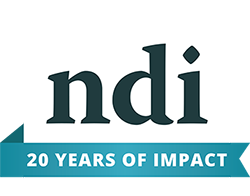There is a well-established and stubborn correlation between disability and poverty. The link between these two social phenomena creates challenges for people with disabilities, service providers, researchers, and advocates across the United States.
At the Research and Training Center on Disabilities in Rural Communities (RTC: Rural), we see this relationship as dynamic, contextual, and rooted in environmental conditions. In fact, looking at a map of poverty and disability across counties in the United States, it is clear that where you live matters for how you may experience both disability and poverty.
(ALT Text: This map of the United States depicts poverty rates among people with disabilities by county. Rates are broken into five categories ranging from 0.0{62b3d06aedb80bbd2b61f3df568a0ad434571db86a37d82bd467350c12bf3bb1} to 70.23{62b3d06aedb80bbd2b61f3df568a0ad434571db86a37d82bd467350c12bf3bb1}. Poverty is more prevalent (30.16-70.23{62b3d06aedb80bbd2b61f3df568a0ad434571db86a37d82bd467350c12bf3bb1}) among people with disabilities in the South, especially in eastern Kentucky and select counties in western Texas, New Mexico, Arizona, and South Dakota. Poverty is generally lower (0.0-30.15{62b3d06aedb80bbd2b61f3df568a0ad434571db86a37d82bd467350c12bf3bb1}) among people with disabilities in the Great Plains and Midwestern states and throughout the Rocky Mountain region. To browse or download the data this map was created with, use our Disability Counts Data Finder tool.)
(ALT Text: This chart depicts the poverty rate broken down by disability status and county type. People with disabilities are more likely to experience poverty across the rural-urban spectrum. For people with disability rates range from 14.7{62b3d06aedb80bbd2b61f3df568a0ad434571db86a37d82bd467350c12bf3bb1} in metropolitan counties to 17.1{62b3d06aedb80bbd2b61f3df568a0ad434571db86a37d82bd467350c12bf3bb1} in rural micropolitan and non core counties. For people with disabilities poverty rates range from 22.4{62b3d06aedb80bbd2b61f3df568a0ad434571db86a37d82bd467350c12bf3bb1} in metropolitan counties to 24.4{62b3d06aedb80bbd2b61f3df568a0ad434571db86a37d82bd467350c12bf3bb1} in micropolican and 25{62b3d06aedb80bbd2b61f3df568a0ad434571db86a37d82bd467350c12bf3bb1} in non core counties. Overall, these data indicate that poverty rates increase consistently with disability and rurality. Source: American Community Survey 2010-2014 5-year estimates (Table C18130).
For example, poverty is experienced at much lower rates among people with disabilities across counties in the Mid-West and West (with the notable exception of counties containing American Indian reservations), compared to higher rates throughout Appalachia and the rural South. Beyond these regional differences, we also find that people with disabilities are more likely to experience poverty and that these rates increase in rural areas.
Historically, the cultural values of rural America have revolved around beliefs in personal responsibility, individualism and independence. At the core of which lay an idea that with enough hard work and “grit” anyone can make it. As a result, it is tempting to point to a lack of work ethic and motivation as a primary “cause” of this persistent relationship between poverty and disability.
However, the answer is never so simple. There are multitudes of reasons underlying this relationship and the most compelling connect to systemic and institutional characteristics of the American landscape. In this blog, we highlight how inequalities built into our current economic, healthcare and housing structures systematically disadvantage people with disabilities.
Labor market conditions
People with disabilities have significantly lower employment rates than people without disabilities and are among the most vulnerable in times of economic instability. Employment rates during the Great Recession fell faster for people with disabilities compared to those without, although this accelerated downward trend is following a longer-term pre-recession decline (Livermore & Honeycutt, 2015). While the Great Recession officially ended in 2009, rural economies were hit harder than urban ones and employment rates in rural places have struggled to recover (Cromartie, 2017). This is especially true in rural places with manufacturing dependent economies across the South where we see stubbornly high rates of poverty for people with disabilities.
For people with disabilities in rural areas the impact of the economy is two-fold. For instance, acquiring a disability (that may worsen overtime) in a rural community coupled with reduced employment opportunities or a lack of government-based resources such as Labor and Industries compensation, creates a pathway to poverty. Other individuals with early onset disabilities may struggle to get a foothold in the rural labor market as they transition to adulthood, a time when supports are severely restricted for people with disabilities.
Healthcare costs
Regardless of poverty status, having a disability creates increased daily living financial costs for most people. Studies have shown that there is a significant financial burden attached to disability; people with disabilities spend up to 65{62b3d06aedb80bbd2b61f3df568a0ad434571db86a37d82bd467350c12bf3bb1} more on out of pocket expenditures than those without. Though these additional costs come in many forms, the vast majority are in additional healthcare expenses like co-pays for medical appointments, medical transportation costs, prescription and non-prescription medications, in-home care and, in extreme cases, institutional nursing home care (Mitra, Palmer, Kim, Mont, & Groce, 2017).
Housing influences
Access to housing that is both affordable and accessible is one of the biggest barriers individuals with disabilities face living in the community. Across the country, wages are not keeping up with increasing housing costs (NLIHC, 2016). This imbalance has led to an increase in the number of individuals considered “rent burdened”, or pay more than 30{62b3d06aedb80bbd2b61f3df568a0ad434571db86a37d82bd467350c12bf3bb1} of their monthly income on housing. In fact, data from the American Housing Survey (AHS) finds that rent burdened households are more likely than others to include an individual with a disability (HUD, 2011). In addition, people with disabilities are also more likely to live in poor quality substandard housing (Hoffman & Livermore, 2012). Again, these issues are magnified in rural areas where housing options are more limited, housing stock is older and manufactured mobile homes are more common.
For people with disabilities who cannot work, those receiving Supplemental Security Income (SSI), the situation is extreme with average housing costs exceeding federal assistance levels (TAC, 2017). Though there are some federal housing programs aimed at providing affordable housing for people with disabilities, these safety net systems are not meeting the need. This discrepancy between monthly earnings and the cost of housing forces already cost burdened individuals and families into substandard housing, homelessness or institutions.
Overall, many people with disabilities must balance a delicate web of institutional and systemic resources in order to maintain stability, both in and out of poverty.
For more information and resources check out the Rural Disability Resource Library. This website is an online collection of resources specifically for rural people with disabilities, their families, and service providers. It contains more maps, fact sheets, how-to guides, information for conducting workshops, web resources, and much more. This website helps make the job of finding relevant resources easier for people who live in rural areas, and those who serve them.
For nearly 30 years, the Research and Training Center on Disability in Rural Communities (RTC:Rural) at the University of Montana has conducted research on disability in rural communities. Our work has led to the development of health promotion and employment programs, disability policy, and support and education for providers who serve people with disabilities. Through our research, we hope to improve the quality of life of people with disabilities in communities across the nation.
Dr. Rayna Sage is a rural sociologist who began working with RTC: Rural in November of 2016. While attending Washington State University she earned her M.A. in Human Development in 2003 and her Ph.D. in Sociology in 2012. Between these two degrees, she worked as a home visiting social worker for rural low-income families with small children. Utilizing primarily qualitative methods, Dr. Sage conducts her research to study and combat gender and economic inequality and enhance the vitality of rural labor markets and community support systems.
Lillie Greiman has worked for RTC: Rural since 2012 as a Research Associate and Project Director focusing on housing, community participation and spatial and demographic analysis. She is originally from Helena, MT but has lived in Missoula for ten years where she attended the University of Montana and earned her MA in Geography.
References:
Cromartie, J. (2017). Rural America at a glance, 2017 edition. Washington, DC: USDA Economic Research Service. Retrieved from https://www.ers.usda.gov/webdocs/publications/85740/eib-182.pdf?v=43054
Department of Housing and Urban Development. (2011) Disability Variables in the American Housing Survey (Project. No. 1031-000). Washington, D.C: U.S. Government Printing Office.
Hoffman, D. W., & Livermore, G. A. (2012). The house next door: A comparison of residences by disability status using new measures in the American Housing Survey. Cityscape, 5-33.
Livermore, G. A., & Honeycutt, T. C. (2015). Employment and economic well-being of people with and without disabilities before and after the great recession. Journal of Disability Policy Studies, 26(2), 70–79.
Mitra, S., Palmer, M., Kim, H., Mont, D., & Groce, N. (2017). Extra costs of living with a disability: A review and agenda for future research. Disability and Health.



